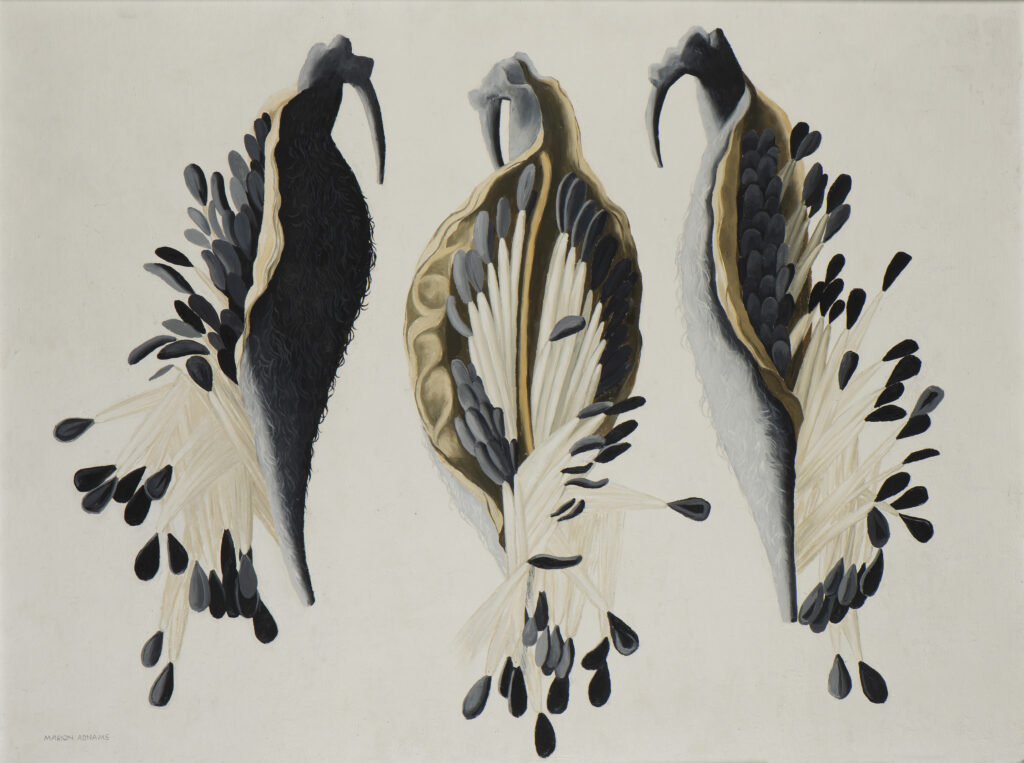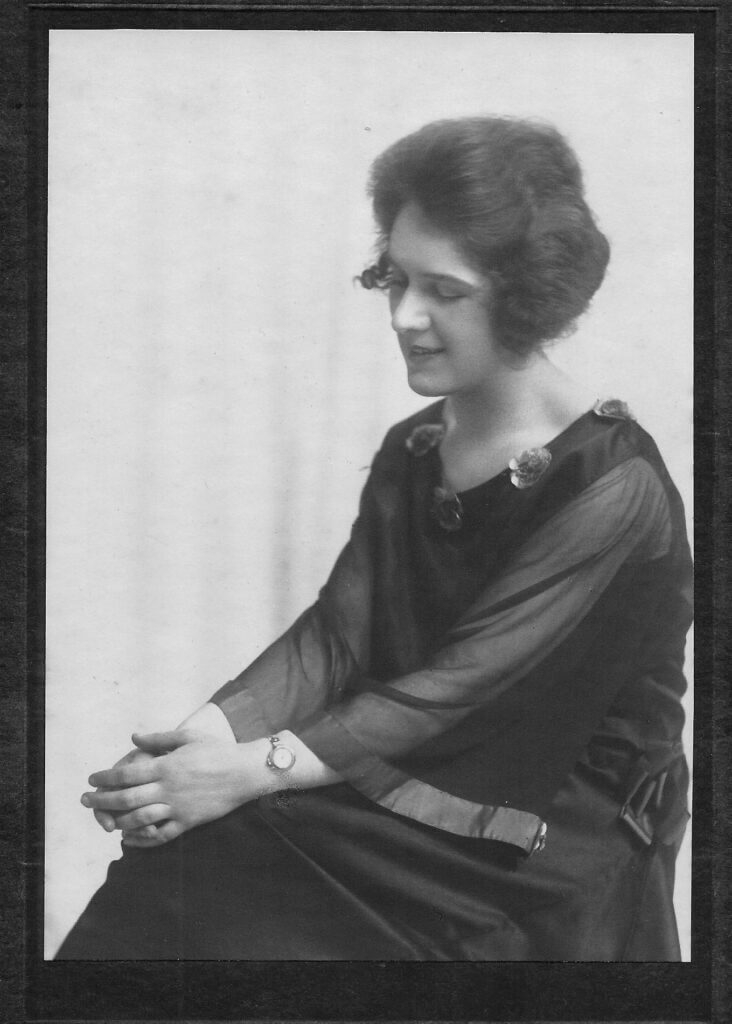Your currently viewing RAW Modern | Switch to RAW Contemporary
Les Perruches, 1968
Catalogue essay by Blanche Llewellyn
Throughout her lifetime Marion Adnams was attracted to ambiguous subjects that allowed for various interpretations, emphasizing the surreal potential of everyday forms by altering their original context. In her painting “Colloquy,” she offers a naturalistic depiction of Asclepias syriaca, also known as Perruches (French for Budgies) whose fruits resemble parakeets in shape. Painted in April 1968, this work was produced on an uncharacteristically large scale – a choice she made in part because her eye sight (but none of her facility) was beginning to fail. Floral imagery was relatively rare for Adnams, as her work did not focus on the flora, however, it still maintains strong surrealists symbolisms holding within its double meaning – the subject undoubtedly appealed to her on account of its strong sexual symbolism and potential for multiple interpretations, whether literal or metaphysical. The seeds of Asclepias Cornet look like birds of omen, representing the cycle of life as the seeds fall out like a magnificent bird’s tail. Reflecting on this transformative cycle, Adnams once noted, “I’ve seen the seeds but you know I’ve never seen the growing flower. Very odd.”
1968 was a pivotal year for Adnams. Responding to her deteriorating health the same year she acquired her second home in France. She most probably discovered this plant in the South of France, a region where Adnams frequently traveled, explored, and painted. Here, she found inspiration and a new lease of life – but she also accepted the inevitable, writing of the onset of her partial blindness, “I should never draw again. The gift I had treasured all my life had been taken away. I remember little of that first winter, which is perhaps just as well, for now my own personal darkness was added to the seasonal darkness I had always dreaded.” and then reflected on the brevity of life: “It was a curious experience to look back on a lifetime, that is, and all, too short.” .
Perruches was to be one of her last major works. Typical of Adnams fascination with word as well as image play – the title was clearly intended to be autobiographical. The Latin name for perruches, Asclepias Cornets, references the Greek god of medicine, Aesculapios, the son of Apollo. He is said to be able to bring the dead back to life – In this context, the Asclepias Cornet holds deep significance in, symbolizing the end of her career with its meaning, “let me go.” whilst maintaining hope that her art will remain alive.

